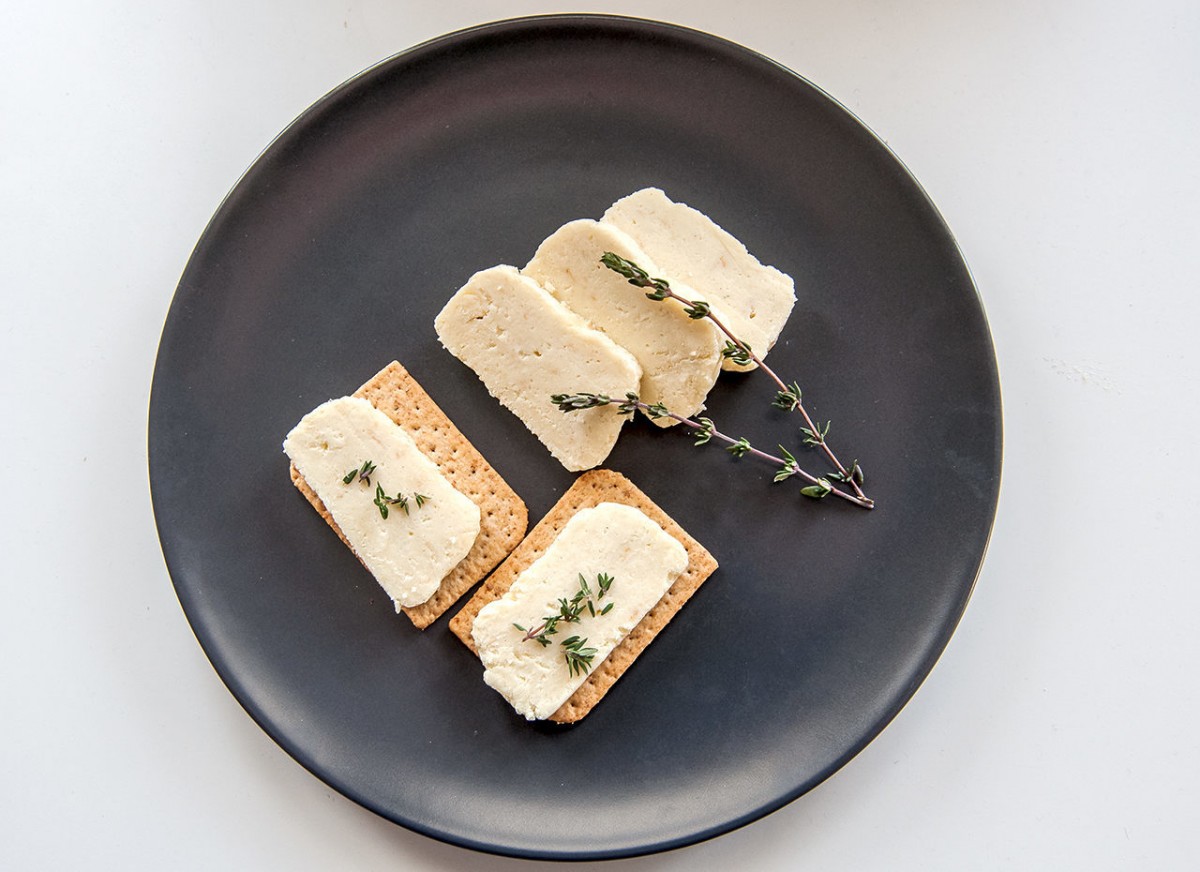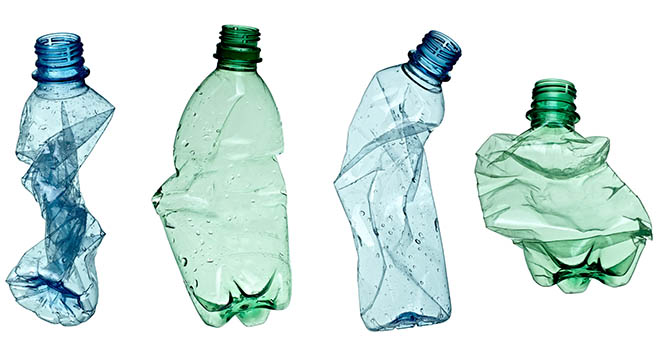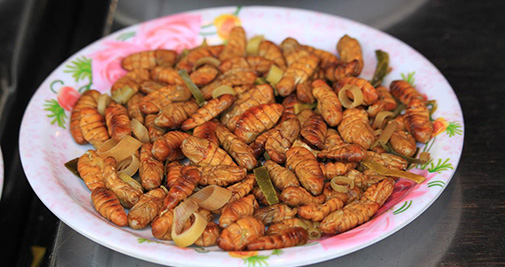I’ve long been fascinated by the Svalbard Global Seed Vault. The Norwegian deep freeze is where thousands of the world’s food crop seeds lie slumbering, preserved as a testament to Earth’s genetic diversity — with a sad eye to the day when they are extinct outside of the seed vault’s concrete walls.
But for all its officialness, the Svalbard Vault shouldn’t let us get complacent about the state of seeds worldwide. It takes a thousand daily tiny acts of conservation to preserve our planet. Ideally, we should never get to the point of needing to access the Vault’s contents — which is why I am inspired by this profile of Will Bonsall, author, farmer, and virtual one-man seed-vault. Bonsall is doing his bit to preserve food diversity in his own corner of the world. His Maine homestead features a seed collection of countless varieties of peas, beets, tomatoes, corn, and other crops, organized in envelopes and waiting for the day they can see the sun again.
“Whereas other seed savers might concentrate on specific crops, on what grows best in their regions, or on species that exhibit certain characteristics, Bonsall seems to value rarity and diversity for their own sakes. Among his alphabetized envelopes are plenty of heirloom seeds that no one is particularly clambering to plant, but Bonsall compares his collection to a library — he doesn’t get rid of something just because no one has checked it out in a while. Here and there, he suspects he has some varieties that only a handful people worldwide still possess — a rare beet, for instance, once grown by gardeners in a region of Bosnia decimated by war and genocide in the ’90s.
Unlike the Doomsday Vault and other institutional collections, Bonsall’s Scatterseed Project aims to actually scatter his seeds. In the old days, he did this by publishing lists of his varieties in directories printed by groups like the Seed Savers Exchange. These days, he fills requests that come through various online platforms. He has long been a presence at ag fairs and grange-hall meetings, where other growers can pick his brain and sometimes rifle through his inventory. Since he launched the Scatterseed Project in 1981, Bonsall estimates he’s shared seeds with tens of thousands of people.”
In this space, we’ve looked at seed genetic diversity as a time machine to the past, but reading about Bonsall and his quest is the first time I’ve thought of it as a time machine to the future. Bonsall and other seed protectors are ensuring a human food horizon that can handle blight, fungal infection, and corporate interests through our planet’s greatest strength — individuality. It’s up to us and our individuality to ensure their efforts stick!

Necessity may be the mother of invention, but in this case, it seems the mother of re-invention as well: Japanese foodies are making an ancient “cheese,” called so, to liven up their quarantines due to COVID-19. They’re also doing it for a civic-minded reason — with kids out of school, there is an overabundance of the milk they usually drink with their school lunches. Home cooks are now processing the excess milk into a dairy delicacy with very historic roots. The always-entertaining Gastro Obscura has the details:
“It’s not quite certain where the trend started, but along with recipes for desserts that used excess milk, a craze for making so took off in early March. So (pronounced with a short o, as in ‘lot’) is a Japanese dairy product from the Nara (710–794) and Heian (794–1185) periods, when the influence from China and Korea was at its strongest. The aristocrats that ruled the land at the time eagerly absorbed culture and technology from the mainland, including the consumption of dairy products and dairy farming, which didn’t exist in Japan at the time. […]
The Engishiki, a book of laws and customs that was written mostly in 927, notes that so was made by cooking down milk to one-tenth of its volume. It was exquisite enough to be deemed suitable for presenting to the emperor.”
Article author Makiko Itoh attempted her own batch of so at home, with mixed results. She scorched her first try, while “distracted by some COVID-19 news.” Her second batch was successful, after six hours of careful stirring on her stovetop, but tastewise, she felt it was a flop. For modern palates used to the variety of sharp, fermented, and otherwise flavourful cheeses, so, as simply concentrated milk, reads as bland.
But, like sourdough and other slow food projects that cooped-up citizens are picking up, so could be fun — and, paired with the right zesty cracker, even tasty. Now more than ever, I’m a fan of efficiency, so I’m very into this history lesson and Instagram-worthy snack all in one!

In this time of supply-chain uncertainty, many of us are looking at different sources of food. It seems that includes other species: namely, a compost-heap-derived bacterial enzyme that scientists have refined to eat and recycle plastic — within hours!
Originally discovered happily digesting a pile of leaves in 2012, this year the enzyme became the front runner in science’s search for something — anything — to help us dig out from under the huge amounts of plastic we release into our planet, without hope of  reuse. Researchers on behalf of a Carbios, a French bio recycling and biodegradation firm reorganized the enzyme’s insatiable hunger and aimed it toward PET. PET is the shatter-resistant, pliable, and inexpensive plastic with which water bottles and cosmetics containers are made — and the toughest to recycle back into plastics of comparable quality.
reuse. Researchers on behalf of a Carbios, a French bio recycling and biodegradation firm reorganized the enzyme’s insatiable hunger and aimed it toward PET. PET is the shatter-resistant, pliable, and inexpensive plastic with which water bottles and cosmetics containers are made — and the toughest to recycle back into plastics of comparable quality.
“The scientists analysed the enzyme and introduced mutations to improve its ability to break down the PET plastic from which drinks bottles are made. They also made it stable at 72C, close to the perfect temperature for fast degradation.
The team used the optimised enzyme to break down a tonne of waste plastic bottles, which were 90% degraded within 10 hours. The scientists then used the material to create new food-grade plastic bottles.
Carbios has a deal with the biotechnology company Novozymes to produce the new enzyme at scale using fungi. It said the cost of the enzyme was just 4% of the cost of virgin plastic made from oil.”
While scientists do recognize that reducing our general dependence on plastic is important, there are some industries, like medicine and food preparation, where PET plastics really are the best material. Making more PET out of already-used PET, rather than downgrading it to carpet fibres or stuffing for sleeping bags, can keep our overall creation of plastics down to a minimum. That spells maximum efficiency for us, a reduced burden on Mother Nature — and some delicious snacks for a certain hungry bacterial enzyme!

While we are still in the thick of the COVID-19 curve, it feels like a luxury to think about a future that not all of us are going to get a chance to see. But some experts are starting to talk about the potentially beneficial social fallout our descent into the unthinkable might have.
How humans consume the bounties of our planet — the air, the water, and other animals — is now under a microscope lens. COVID-19 is accepted to have begun in a mix of interspecies fluids in a Wuhan wet market. The original SARS started the same way. Heck, the best guess at how Spanish influenza may have arisen is a human flu and the avian flu both finding a home in pigs on a Kansas farm — pigs whose bodies quickly brewed the new super-virus. While China is rolling out a ban on wildlife trade for food purposes, it remains to be seen whether loopholes for the use of animals in traditional medicine will be closed, or even if the ban will be enforced at all.
So it’s not just crazy vegans anymore who are calling for the end of our dependence on meat. Just this week, the EU is expected to approve insects as being safe for human  consumption in all member countries. This means mealworms, crickets, locusts, and grasshoppers will soon appear on menus throughout the world’s largest economy — if Europeans can negotiate the tricky legal waters that stand like a moat between them and the protein source of the future.
consumption in all member countries. This means mealworms, crickets, locusts, and grasshoppers will soon appear on menus throughout the world’s largest economy — if Europeans can negotiate the tricky legal waters that stand like a moat between them and the protein source of the future.
“The UK, Netherlands, Belgium, Denmark and Finland have taken a permissive approach to a 1997 EU law that requires foods not eaten before that year to get novel food authorisation. […]
But such products are banned in France, Italy and Spain, among other countries. In 2018, a new EU law sought to bring some clarity. It stipulated that insect-based dishes would also require novel food authorisation. […]
Indeed, companies such as Protifarm in the Netherlands, Micronutris in France, Essento in Switzerland and Entogourmet in Spain are said to be preparing to ramp up their operations.
“We have many of our members building bigger factories because the key to success is to upscale your companies and produce on a mass scale. And this is already happening,” [International Platform of Insects for Food and Feed secretary-general Christophe] Derrien said. “We are expecting the next few years will be very interesting ones and obviously the novel food authorisations will definitely help.
Insects as food is a concept that has deep roots in many international cuisines. But the EU getting on board means a stamp of approval from an economic powerhouse — for a form of protein that is low-overhead, low-environmental-impact, and low-fat. The world could be a very different place if we wean ourselves off the water- and resource-hogging factory-farming industries, and meat in general. After all, even insects aside, there’s plenty of other things we can still have the joy of grilling — when all this is over!

Talmudic into modern-day measurements – making sense out of what those rabbis were talking about
Talmudic Measure |
Modern equivalent |
Equivalent to |
Also equivalent |
Familiar equivalent |
| Thumb-breadth | 2cm | Cherry | ||
| Handbreadth | 8cm | 4 thumb-breadths | Credit Card | |
| Handspan | 24cm | 3 handbreadths | 12 thumb-breadths | 11 Piano Keys |
| Cubit | 48cm | 2 handspans | 6 handbreadths | Ruler |
| 4 Cubits | 192cm | 75 inches | 6.25 feet | bed or grizzly bear |
Dry Measures |
||||
| Chomer | 220 litres | 200 dry quarts | Coleman chest | |
| Eipha | 22 litres | 20 dry quarts | Backpack | |
| Omer | 2.2 litres | 2 dry quarts | Large matzo meal canister (almost) | |
| Kav | 1.2 litres | 1.1 dry quarts | Quart of fruit | |
Liquid Measures |
||||
| Cor | 220 litres | 55 US gallons | 30 se’as | 55 gallon drum |
| Bath | 22 litres | 5 US gallons | 72 logs/6 hin | Potable water jug |
| Se’a | 7.3 litres | 1.9 US gallons | Stock Pot | |
| Hin | 3.7 litres | 0.98 US gallons | Gas Can | |
| Log | 0.31 litres | 310 millilitres | 1/12 of a hin | Drinking glass |
Talmud measure |
Daf reference |
Approximate equivalent |
Pictorial reference |
| 1 handbreadth | Shabbat 22, 54, 85, 92, 138, 157 | 8cm/3.1” | Credit card |
| 4 x 4 handbreadths | Shabbat 4, 76, 79, 91, 100, 101, 155 | 32 x 32cm/12.6” | Chess board |
| 10 handbreadths | Shabbat 4, 21, 91, 92, 96, 97, 99, 100, 101, 117, 155 | 80cm/31.5” | Long shoehorn |
| Multiples of Log | Shabbat 76, 77, 78, 79, 82, 95, 109, 129, 132 | 310 millilitres/10.5 fl oz | Drinking Glass |
| Kav (of dough, etc) | Shabbat 15, 103, 140, 156 | 1.22L/1.1 dry quart | Flower pot |
| 4 cubits | Shabbat 5, 52, 53, 57, 61, 62, 73, 82, 96, 97, 98, 100, 101, 102, 110, 118, 127, 130, 141, 146, 153 | 192cm/6.25’ (feet) | Bed or Grizzly Bear |
| 10 cubits | Shabbat 92, 98 | 480cm/15.7’ (feet) | Conference Table |
| 20 cubits | Shabbat 22 | 960cm/31.5’ (feet) | Powerboat/Caravan Awning |
| Multiples of cor | Shabbat 4, 35,127, 155, 156 | 220L/200 dry quarts | Coleman cooler |
| se’a | Shabbat 59, 119, 142, 153 | 7.3L/1.9 gallons | Stock Pot |
| 40 se’as | Shabbat 35, 44, 46, 84 | 288L/76 gallons | Hot water heater (tank) |
| 1 mil | Shabbat 34, 88, 109, 129 | 960m/0.6 mile | Free suspension part of Sutong Bridge |

Among the many things we are getting up to in this time of contagion and physical distancing is a) taking care of projects around the house, and b) ordering in food from hard-hit local restaurants to help keep them afloat.
Luckily, we can now combine these two tasks into one, with news from ad firm Ogilvy Hong Kong: Swedish furniture behemoth IKEA and pie-slinging chain Pizza Hut have joined forces to create the Säva, a full sized table that is a dead ringer for the white plastic “pizza saver” we’ve all seen defending our delivery deep-dish.
The table comes flat-packed (naturally!), and the assembly instructions include a suggestion to order a Swedish meatball pizza from the Hut (like the table, also only available in Hong Kong). When you place the boxed pizza — and its pizza saver — on top of the Säva, it forms a recursive loop, much like the Land o’ Lakes butter packaging. Pizz-ception, if you will!
It’s hard to find info on this table that isn’t a rehashed press release, but I did dig up an interesting tidbit: that “the campaign has already proven successful, with the IKEA x pizza hut pizza selling more than 67% of the projected units.” That’s a lot of financial investment in a visual joke…
Sure, it’s a publicity stunt for both companies. But I was won over by the whimsy inherent in making a real-life version of the table my kids repurposed and sat their action figures around way back when. And, I think we need more whimsy right now. More whimsy, and always, more pizza!